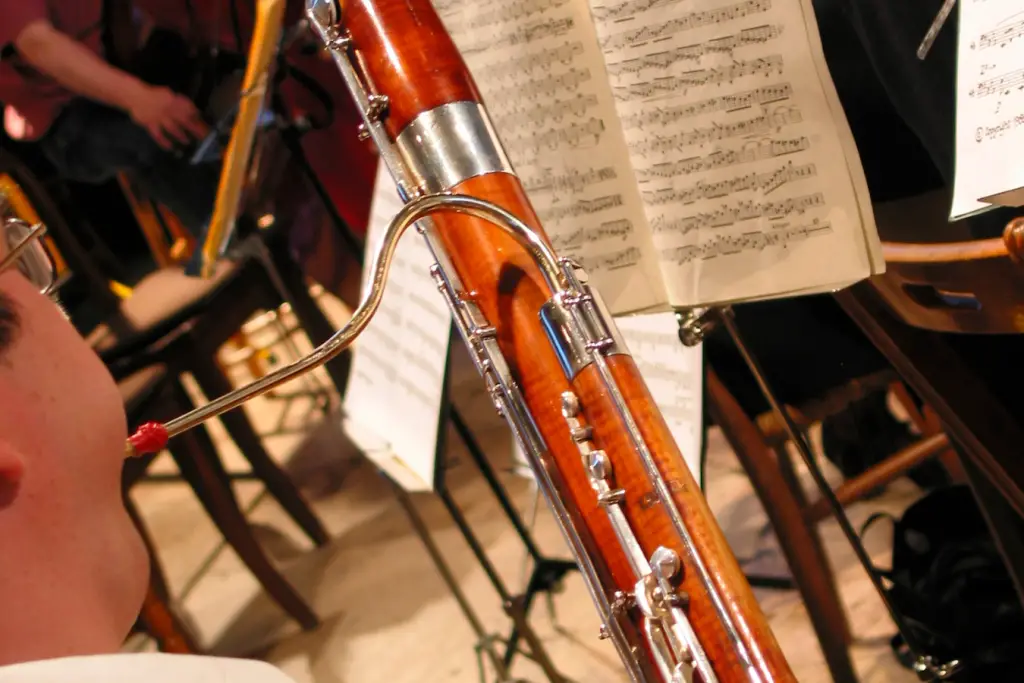The bassoon is a fascinating instrument, known for its unique sound and impressive range. From its deep, resonant lows to its bright, expressive highs, the bassoon offers a tonal palette that enriches orchestras, chamber ensembles, and solo performances alike. This article explores the bassoon’s range, its tonal qualities, and the techniques that bring its sound to life.
The Range of the Bassoon
The bassoon has one of the most extensive ranges among woodwind instruments. Its wide pitch capabilities allow it to play diverse roles in music.
1. The Bassoon’s Pitch Range
- Low Notes:
- The bassoon’s range begins at B♭1, just below the bass clef.
- These low notes are full-bodied and resonate deeply, often used to provide harmonic foundations.
- High Notes:
- The instrument can ascend to E5 or higher in skilled hands.
- High notes are bright, agile, and sometimes whimsical in tone.
- Extended Techniques:
- Advanced players can use altissimo fingering to achieve notes beyond the standard range.
2. Range in Context
- The bassoon’s range spans more than three octaves.
- It bridges the gap between the bass and tenor registers, making it a versatile instrument in ensembles.
The Tone of the Bassoon
The bassoon’s tone is as distinctive as its appearance, capable of evoking both humor and solemnity.
1. Warm and Resonant Lows
- Low notes are often described as rich, sonorous, and velvety.
- They are frequently used in symphonies to add depth and warmth to orchestral textures.
2. Expressive Midrange
- The midrange is where the bassoon truly shines.
- It offers a balance of warmth and clarity, ideal for lyrical passages and melodic solos.
3. Bright and Playful Highs
- The upper register has a clear, penetrating quality.
- These notes are often used for playful or humorous effects in compositions.
Factors Influencing the Bassoon’s Sound
The bassoon’s tone and range are influenced by several factors, including its construction, the reed, and the player’s technique.
1. Instrument Construction
- Material: Most bassoons are made from maple wood, which enhances warmth and resonance.
- Bore Design: The instrument’s conical bore contributes to its unique timbre.
2. Reed Quality
- The reed is a critical component, significantly affecting tone and responsiveness.
- Variations in reed thickness, shape, and material can produce subtle changes in sound.
3. Player’s Technique
- Breath control, embouchure, and fingering all play essential roles in shaping the bassoon’s tone.
- Skilled players can manipulate these elements to achieve a wide range of tonal colors.
Exploring the Bassoon’s Role in Music
The bassoon’s range and tone make it a versatile instrument in various musical settings.
1. Orchestral Music
- Bass Line Support:
- In symphonies, the bassoon often provides a solid foundation for harmonies.
- Solo Passages:
- Composers like Mozart and Stravinsky have written prominent solos showcasing the bassoon’s expressive capabilities.
2. Chamber Music
- The bassoon blends seamlessly with other instruments, adding depth and character to small ensembles.
3. Solo Repertoire
- As a solo instrument, the bassoon demonstrates its full range and tonal versatility.
- Works like Weber’s Bassoon Concerto in F Major and Vivaldi’s bassoon concertos highlight its lyrical and virtuosic potential.
Techniques to Expand the Bassoon’s Range and Tone
Mastering the bassoon involves refining techniques that maximize its range and tonal potential.
1. Breath Support
- Proper breath control is essential for producing consistent tone across the instrument’s range.
- Practice exercises that strengthen lung capacity and diaphragm control.
2. Embouchure Adjustments
- Small changes in embouchure can drastically affect tone quality.
- Experiment with reed placement and lip pressure to find the best sound for each register.
3. Fingering Techniques
- Use alternate fingerings for difficult passages to improve intonation and ease transitions.
- Learn advanced fingerings for altissimo notes to expand your range.
Common Challenges and How to Overcome Them
The bassoon’s range and tone offer great potential, but they also present unique challenges.
1. Achieving Consistent Intonation
- Problem: Intonation can vary across registers.
- Solution: Practice long tones with a tuner to develop stability and pitch accuracy.
2. Balancing Registers
- Problem: Transitions between low and high registers can be uneven.
- Solution: Focus on smooth fingerings and controlled air pressure during register shifts.
3. Reed Responsiveness
- Problem: A poorly made reed can hinder tone and range.
- Solution: Learn to adjust or craft reeds for optimal performance.
Tips for Beginners
If you’re new to the bassoon, focus on these basics to explore its range and tone effectively:
- Start with Quality Equipment: Invest in a well-made beginner bassoon and high-quality reeds.
- Practice Daily: Consistent practice is key to developing range and tone.
- Seek Guidance: Work with a teacher to develop proper techniques from the start.
Advanced Insights for Professionals
For seasoned players, exploring the bassoon’s full potential involves pushing boundaries:
- Experiment with Reeds: Customize your reeds to suit specific musical styles.
- Delve into Extended Techniques: Learn multiphonics, flutter tonguing, and other advanced methods to expand your tonal palette.
- Collaborate with Composers: Work with contemporary composers to create pieces that showcase the bassoon’s unique capabilities.
Conclusion
The bassoon’s range and tone are at the heart of its charm and versatility. From its warm, resonant lows to its bright, expressive highs, the bassoon offers a world of musical possibilities. By understanding its capabilities and mastering the techniques required to unlock them, players can fully embrace the beauty and complexity of this remarkable instrument.

